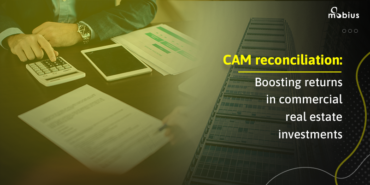Renting a space in a commercial property is crucial and a great deal of responsibility for any business owner. The commercial real estate sector is complex, and so are commercial leases. Therefore, commercial tenants must go through the lease documents page by page before signing a lease as it reflects the terms and limitations of business operation within the property.
Whether you rent the space to open a new business store, shift office, or utilize the rented space for business operations, agreement signing is one of the first steps.
The commercial lease agreements are detailed and complex documents that the lessee must comprehend, as understanding each clause in the agreement is crucial.
At the same time, landlords must know about commercial leases and their pros and cons to draft the correct type of lease that matches their renting terms and conditions.
Here is what Walter Gumersell, a partner in Rivkin Radler’s practice groups, suggested for business owner
- Do a lot of planning before shifting the workplace from one place to another.
- Confirm the terms mentioned in the document before signing a lease.
- Do extensive research on the terms as broadly as possible.
This blog lets us know the types of lease agreements, key terms to be aware of, and the details you should look for before signing the contract.
Types of Commercial leases
As a commercial property landlord or property manager, you must clearly understand the pros and cons of different commercial lease types.
Leases hold both parties’ property information, terms, conditions, and responsibilities. However, each lease type has its specific purpose and reflects the concerns of landlords and tenants.
To help you better understand, here’s a synopsis of the types of commercial leases.
1. Full-service lease
In this lease type, the landlords take full responsibility for paying the property operating expenses and maintenance. Here, the tenants will pay the monthly fixed rent and are not liable for other costs related to the property. Full-service lease agreement comes as a one-time payment package along with amenities.
Pros
Tenants benefit from the fixed monthly rents without paying any additional expenses. The only thing tenants need to be concerned about is their base rent, which includes every charge.
Cons
In this type of agreement, the landlords may need an additional hand for property management as they take complete responsibility for property maintenance and expenses. This type of agreement doesn’t suit landlords looking for passive investment.
2. Triple-net lease
Triple-net lease structures are commonly followed for drafting commercial leases. It is reliable and holds significant benefits for both landlords and tenants. In this type of lease, the landlords divide the common area maintenance expense, insurance, taxes, and rent among the tenants on a pro-rata basis.
Pros
The triple-net lease often works well for the landlords. It delivers passive income for the landlords. On the other hand, tenants can enjoy the benefit of lower base rent.
Cons
Landlords/property owners have less control over the property. Tenants take over the responsibility of maintenance and repairs for themselves; hence, the landlords may become unaware of when the repair work starts or completes.
3. Modified-net lease
Modified- net leases are slightly modified from gross net leases. Here, the tenants pay the base rent at the start of their leases and take responsibility for some of the property operating expenses. The landlords cover the CAM expenses along with taxes and insurance.
Pros
Modified net leases save some costs for the landlords and property owners as they no longer pay for utilities inside the rented space and the janitorial services.
Cons
Since the tenants have more control over the property responsibilities, the landlords may become unaware of what repairs are done on the property.
Things to check before signing an agreement
A lease agreement dictates the rental structure and other essential aspects of the lease terms. By looking at the base rent per month, the additional expenses on the property, and the rent increase, you can determine the budget and thoroughly understand the lease structure.
Here are some key terms you should read and clarify with your landlords before signing an agreement.
1. Parties
Any commercial lease begins with the mention of the term parties denoting “tenants and landlords” or “lessor and lessee.” Although it is commonly mentioned in every lease agreement, it is essential to look at the names mentioned under the term. For example, you are a corporation or macro industry or LLC. In that case, the tenant or lessee should be in the company’s name and not in the personal name as it interprets the person is duly responsible under the lease.
2. Premises
The premise clause denotes the premise space you are about to occupy in the building. If you occupy the entire building, the premise clause should mention the street address, and if you lease a portion of commercial space, the premise clause should describe the area precisely.
3. Payment terms
The term denotes how much the tenant must pay to the landlords for the property leased. The payment can be monthly/annual/quarterly as decided by both lessor and lessee. Sometimes the rent payment can be seasonal, in which the tenant can pay the rent when the business is functional.
4. Rental increment
The commercial lease agreement includes the details of the rise in property rent on standard terms or periods set by the property owners, which should be within the regulatory norms. Sometimes, the rent value is selected based on the CPI (Consumer Price Index) adjustments.
5. Term clause
The term clause in the lease document describes the lease’s validity period and specifies the agreement’s starting and termination or the renewable period.
6. Security Deposit
Landlords may demand to pay a security deposit at the beginning of the lease term to make sure the cash is available for them if the tenant fails to pay their rent promptly. For commercial leases, the landlords can demand any amount covering the tenant’s rent and other financial obligations.
7. Late payment and penalty
The term denotes the additional amount payable by the tenant to landlords/property owners after the due payment period. Landlords can charge a certain percentage or delinquent amount as mentioned in the agreement as a penalty for late payment.
8. Use of Premises
When it comes to commercial leasing, the lessor can be more concerned about the type of business operating on the property and may specifically list the variety of firms allowed to operate within the space. The lessor may be particular about the tenant’s line of business and its operating hours, which might impact the surrounding businesses and the property.
9. Maintenance
Renting a commercial property involves sharing specific common spaces with all the tenants. The lease document outlines the shared property expenses of each tenant for which they are liable to pay every month, covering the entire year spent on the property for landlords.
10. Insurance clause
The insurance clause is the essential term in a commercial lease agreement. Commercial leases enclose insurance of both parties that covers the property losses or damages—the insurance clause details the person responsible for insurance and the type of coverage they require in different cases.
11. Other clauses
Apart from the standard lease terms mentioned above, some important terms include disputes, breaking the lease, foreclosure, option to renew, etc. Also, a better explanation of these terms from a lease administrator can reduce the misinterpretation between the parties.
How can we help you with leases?
Leases hold vital information and state the agreement terms between the landlord and tenant. Moreover, landlords and tenants have an equal share in understanding the lease agreement.
Landlords should draft the commercial lease agreement beneficial to both parties, while tenants should evaluate the documents to negotiate and understand their responsibilities and rights.
Mobius offers lease management services for landlords, property managers, and tenants to help them with lease-related responsibilities. Our expert team can draft, analyze, review and manage lease documents and assist the clients through lease agreement procedures.
Are you looking for lease-related services? Contact us and share your inquiries.






